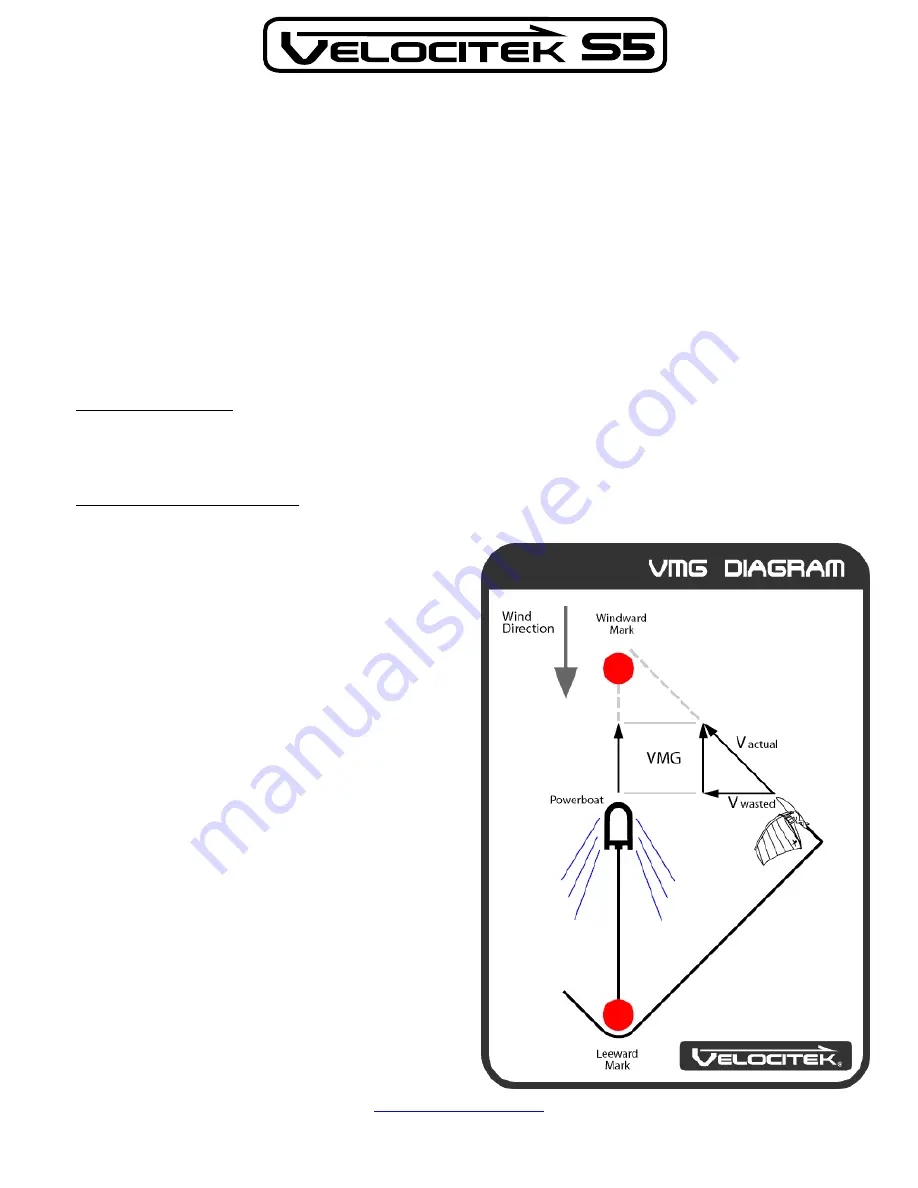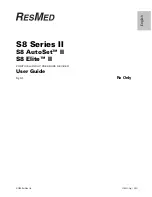
4.
After you have stored the locations of the two reference points, the S5 will indicate both your upwind and
downwind VMG in real time. This will always be a positive number. When you are pointing higher than a
beam reach this will be your VMG upwind, if you are sailing lower than a beam reach it will be your VMG
downwind. If you sail on a beam reach the device will display a very small number no matter how fast you
are going.
5.
Once you have stored the upwind and downwind reference points you may wish to lock out the touch
sensors so that the reference points you have stored are not inadvertently reset by splashing water. To do
this, hold your thumbs over both the “10 SEC / D” and the “MAX / U” buttons simultaneously. When you
do this the device will display the countdown “55”, “44”… “11”. When this countdown finishes the
display will show “rL” for release. When you see “rL”, release both the touch sensors. After you do this
the touch sensors will be locked out and the device will no longer respond to touch sensor inputs. To re-
enable the touch sensors after they have been locked out, you must turn the device off and back on again.
Tip for Windsurfers:
Twist the S5 around your boom so that it faces your sail before you tack. You will then be able to read the display
(now upside down) through your sail window on the new tack.
Frequently Asked Questions
What is VMG?
A good way to understand Velocity Made Good (VMG) is
to imagine a power boat and a Formula sailor traveling
from a leeward (downwind) mark to a windward (upwind)
mark together. The powerboat travels along a straight line
between the marks while the sailor tacks back and forth to
get upwind.
Now imagine that the driver of the powerboat controls the
powerboat’s speed to keep the windsurfer directly off the
side of the powerboat and not ahead of or behind it. The
speed that the powerboat must travel to keep even with the
windsurfer is the windsurfer’s VMG.
As shown in the diagram, the actual speed of the
windsurfer can be broken up into two perpendicular
components: useful speed (VMG) and wasted speed that
does not help the windsurfer get upwind.
All this also applies to a windsurfer jibing back and forth
to get downwind. In this case VMG represents how fast
the windsurfer is getting downwind.
Optimizing VMG is far more important than just going
fast. In an upwind/downwind race VMG is the “bottom
line”. Plain speed is only important in the context of how
it affects your VMG. For example, if you sail on a beam
reach, perpendicular to the wind, you will go really fast but
www.velocitekspeed.com






















